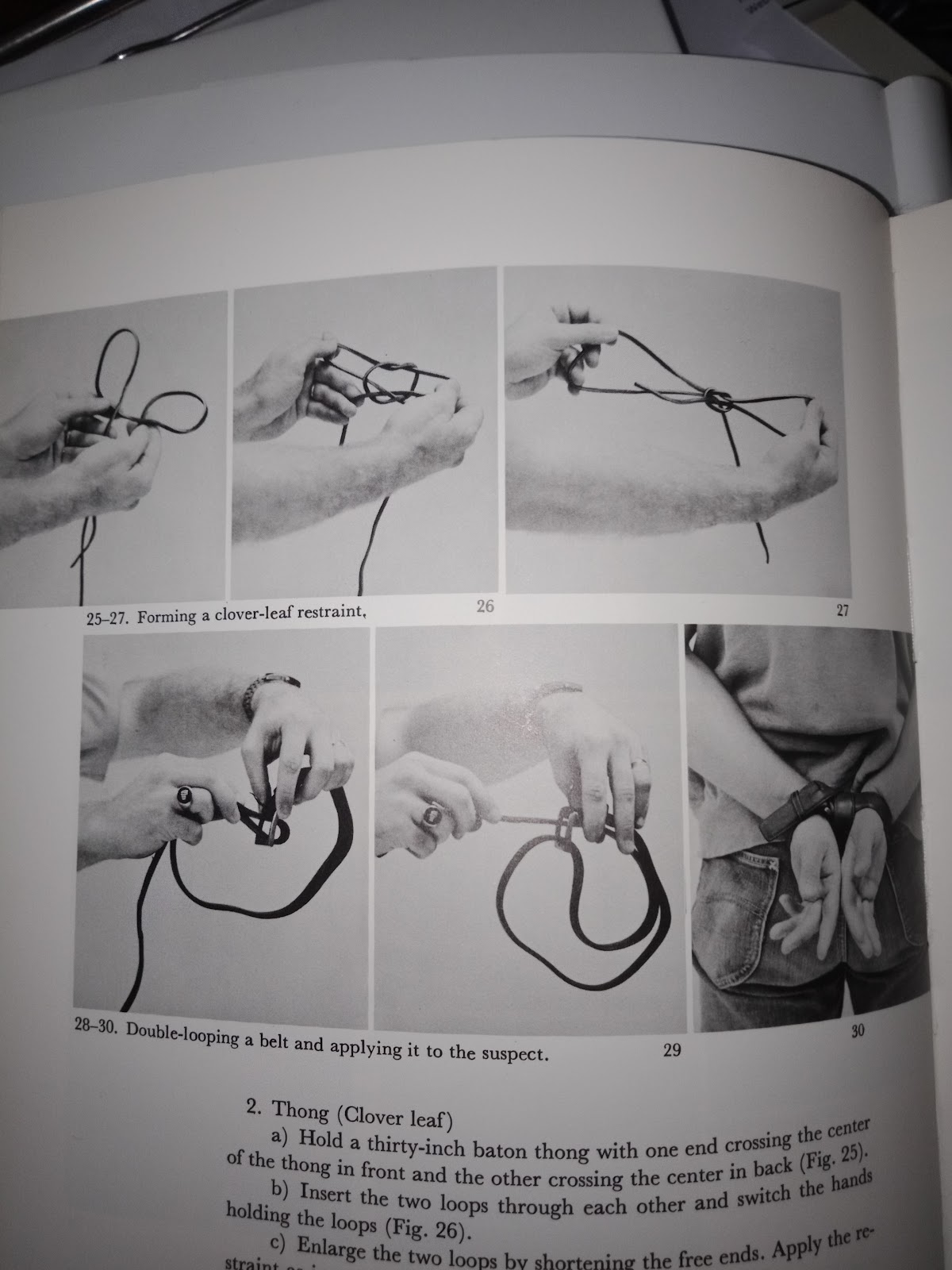Previously ...
This post will be done in two parts because the sandan grading contains 12 parts, whereas shodan and nidan were long enough with nine parts.
You will recall from previous posts that the structure of the dan grades was set with JDJ's initial grading system, the kyu grades, with ikkyu being the instructor grade.
Note: There is no shinken shobu no kata part in sandan. This is the only grading in JDJ's grading system that does not contain a reflex/shinken shobu no kata part to the grading.
The grading requirements and description of the different parts are taken from Jan de Jong: the man, his his school and his ju jitsu system (Jan de Jong Self Defence School, 1997 (p.52)).
This is part two of the two parts discussing the Jan de Jong (JDJ) jujutsu sandan grading.
Part 7 Taiho Jutsu
'Demonstrate various arresting techniques from standing and sitting positions.'
'Taiho' is defined in the abovementioned book as 'arrest, apprehend, seize.'
There are six techniques to this grading. Six.
Part 8 Toshu Kakuto Jutsu
'Demonstrate searching and hand cuffing techniques.'
JDJ said that he included this part in the sandan grading to share with his instructors what he taught the Special Air Service Regiment (SAS).
The Australian Defence Force (ADF) could have saved themselves some money by buying Kill or Get Killed: Riot Control Techniques, Manhandling, and Close Combat for Police and the Military by Rex Applegate (1976) because all of the techniques in this part of the sandan grading are taken straight from this book. Even the order of the techniques is the same.
I alone, among the instructors, found this out because I alone did not rely wholly and solely on the teachings of JDJ. I came to research the subject matter of the gradings.
I showed this to JDJ during the grading. He wasn't interested, even though it was a far superior technique to the one he was teaching.
The top sequence of images in the photograph to the right is also a very simple and effective use of a shoelace or string/rope to make a pair of handcuffs. It is also included in the sandan grading via Kill or Get Killed. I taught this technique to my neighbour's young daughter, who would go on to become my stepdaughter. This then became her 'show and tell' at primary school where she handcuffed one of her fellow primary school students. Needless to say, her mother was called in for a parent-teacher conference.
Part 9 Jo Jutsu
'Demonstrate the use of tobitanbo and jo against various attacks.'
Tobi tanbo is defined/translated in the glossary of the abovementioned JDJ book as being 'jumping stick.' I will let the late Greg Palmer provide the description:
The short answer to your question is perhaps. The Tsutsumi Ryu Ju Jutus (sic) has a set of techniques in which the jo is used to catch and lock or throw the attacker. We do not use it for striking at all pretty much.We also train techniques with the keibo (keijo) - about 22" long which, our sensei told us, were originally police techniques. These we refer to as Tobitanbo (Jumping Stick) techniques. The stick is held downwards along the leg and as a person punches the stick is flicked up to hit the inside of the wrist or elbow, locks or strangles are then done from this position. The hanbo is used in a similar manner but some of the jo techniques are possible with the hanbo. We generally never strike with any of the sticks we use - tanbo, hanbo, keibo and jo. I was shown one or two locking techniques with the yawara stick but our sensei passed away before he taught them to us.
Whether or not these techniques are taught or used by Japanese police I don't know. Apparently the ones we learnt were used by the equivilant of the police in the past.
Hope this answers your question about the possibility of locks etc being done with sticks of various lengths.
Greg Palmer
Tsutsumi Ryu Ju Jutsu
Btw, note Greg's use of 'Tsutsumi Ryu' and not 'Tsutsumi Hozan Ryu.' The badges for JDJ's school also referred to Tsutsumi Ryu, as did the grading certificates. Why not Tsutsumi Hozan Ryu?
The photograph to the right is JDJ demonstrating a jo technique on a '(apparently) hapless instructor John Coles' as Jenny Armstrong described me in an article published in Blitz.
There was also the time that JDJ was demonstrating defences with a jo at the end of a Norway summer camp (or what passes for summer in Norway) where JDJ fractured the hyoid bone in my throat which could have had fatal consequences. He missed the initial deflection and so applied the final technique to my throat a little too vigorously to make up for it.
A JDJ ryuha includes this part in their sandan grading, however, the participants have to make up their own defences against the same attacks for a good part of the grading because the head of that ryuha did not grade nidan nor sandan under JDJ and did not train this grading to any great degree.
Part 10 Manriki-gusari Jutsu
In the grading there are defences against tehodoki, kitori, kubitsukamshime, tsuki, tsuki-mawashi tsuki, uraken, and keri, and there is a section for sutemiwaza.
'Free fight with tanbo vs tanto.'
The issue of the free fighting gradings in the JDJ jujutsu grading system has been discussed ad nauseum, including in this previous post.





No comments:
Post a Comment